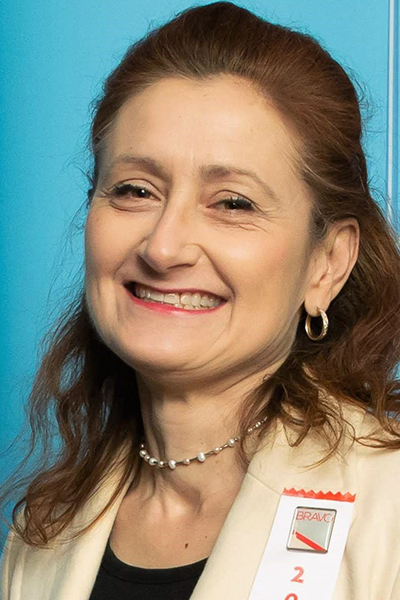
Poster presenter: Sasha Bernatsky, MD, PhD, Clinical Epidemiology Research Institute of the McGill University Health Centre
Poster title: Retinal Toxicity in a Multinational Inception Cohort of Systemic Lupus Patients on Hydroxychloroquine
Scheduled poster session day and time: Saturday, Nov. 7, 9 – 11 a.m. EST
What is your poster about?
The majority of SLE patients in North America use hydroxychloroquine (HCQ). HCQ is a great drug for SLE, which is important because if we don’t control SLE, outcomes for patients (who are often young, female, and minority) are dire. But we need to understand the risk of adverse events across the span of a patient’s disease from the time of SLE onset. To do this, SLE International Collaborating Clinics (SLICC) investigators from 33 countries (presided by Dr. AE Clarke) work together under the leadership of Dr. Murray Urowitz on a study cohort of new-onset patients who have been followed for almost 20 years. We found that reported cases of retinal toxicity started to increase after about 10 years of HCQ therapy. Overall, however, the risk was relatively low, at about 1 case per 10,000 person-years of follow-up. Older age was one clear risk factor for this adverse event There were also trends suggesting greater risk in men, Black patients, those receiving more than 5 mg/kg of HCQ at baseline, overweight patients, and smokers.
Why did you decide to investigate this topic?
In SLE, HCQ greatly reduces lupus flares, but long term, this drug may cause irreversible retinal damage leading to vison loss, and there is no treatment for HCQ retinal toxicity other than discontinuing the drug to prevent further damage. A gut-wrenching dilemma is that we don’t really understand what factors might, over a SLE patient’s lifetime, cause this serious problem.
What excites you most about your work?
Almost all of the 700 SLE patients I follow are on or have been on HCQ. Patients might even refuse to start the drug because they fear complications, even though adverse events are believed to be rare. The more data we have, the more accurately we can predict, in a personalized way, patients’ risk of retinal toxicity. We’ve received funding from the Canadian Institutes of Health Research to produce evidence that can shape personalized treatment, to ensure maximal benefits and minimum toxicities for HCQ use. In this project, I work with many wonderful investigators and also patient partners like Ms. Wendy Singer, who told me, “Understanding how to take HCQ, and when and how to stop it, is vital. Being a patient who lives with retinal damage caused by HCQ, I can’t stress enough how important this research is.”
This poster is on the retinal toxicity part of the equation. A related poster we are also presenting, Outcomes After Hydroxychloroquine Reduction or Discontinuation in a Multinational Inception Cohort of Systemic Lupus, shows that if we do want to consider tapering or stopping HCQ to stay below that threshold of risk for retinal toxicity, we must first be sure that the patient’s disease is well-controlled and ideally wait until we’ve been able to taper prednisone.
What are you working on next related to this poster?
Our fine group of students, including the first author of this poster, Dr. Celline Almeida-Brasil, are conducting interviews to better understand patient preferences in terms or risk and benefits of HCQ. With my colleagues (including Dr. Glen Hazlewood) we are designing a “discrete choice experiment” to understand how patient preferences translate into risk—benefit ratios that they are comfortable with. This will enable physicians to be patient-centered in their conversations with people about when and how to taper HCQ and make our approach much more personalized. Ultimately, I hope we can treat every SLE patient safely!
